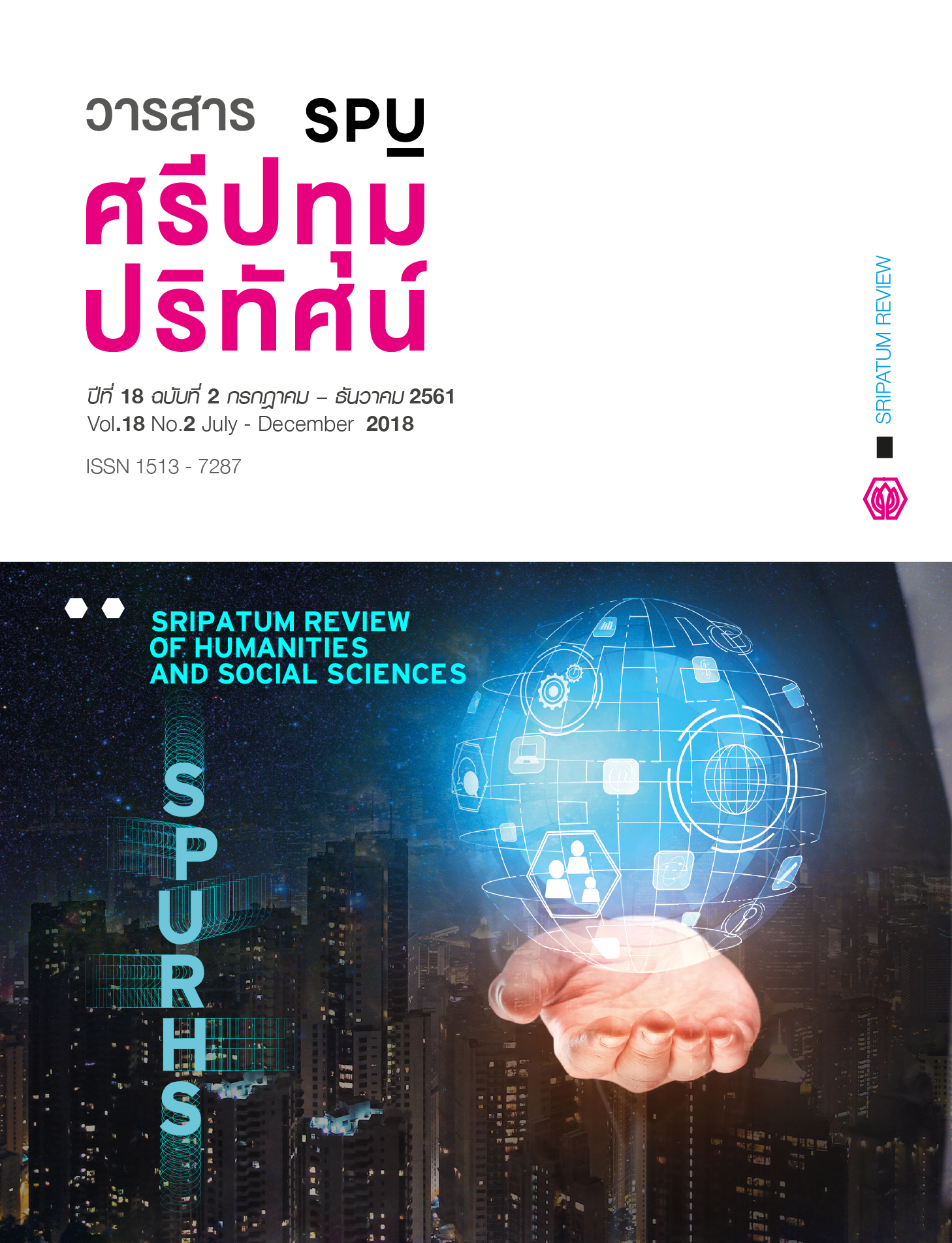A CONSTRUCTION OF THE MATHEMATICAL THINKING STYLES INVENTORY AND A STUDY OF THE RELATIONSHIP AMONG THE MATHEMATICAL THINKING STYLES GENDER, LEVELS OF MATHEMATICS ACHIEVEMENT AND TYPES OF SCHOOLS
Main Article Content
Abstract
The purposes of this research were (1) to construct and verify quality of a mathematics thinking styles inventory; and (2) to study the relationships among mathematics thinking style, gender, level of mathematics achievement, and type of school from which the students graduated. The research sample consisted of 339 randomly selected Mathayom Suksa 3 students of Patumwan Demonstration School of Srinakharinwirot University during the 1st semester of academic year 2017. The research instrument was a mathematics thinking styles inventory. The results show that quality of the developed mathematical thinking styles inventory is high. Its content validity as indicated by IOC (Index of item objective congruence) is equal to 1.00 for every item. Its reliability as indicated by the Spearman Rank correlation is equal to 0.879. The relationship between mathematics thinking style and gender is at the moderate level ( and Cramer's V = .148). There is no relationship between mathematical thinking style and level of mathematics achievement ( ). Also, there is no relationship between mathematical thinking style and type of school from which the students graduated ( ).
Article Details
1. กองบรรณาธิการสงวนสิทธิ์ในการพิจารณาและตัดสินการตีพิมพ์บทความในวารสาร
2. บทความทุกเรื่องจะได้รับการตรวจสอบทางวิชาการโดยผู้ทรงคุณวุฒิ แต่ข้อความและเนื้อหาในบทความที่ตีพิมพ์เป็นความรับผิดชอบของผู้เขียนแต่เพียงผู้เดียว มิใช่ความคิดเห็นและความรับผิดชอบของมหาวิทยาลัยศรีปทุม
3. การคัดลอกอ้างอิงต้องดำเนินการตามการปฏิบัติในหมู่นักวิชาการโดยทั่วไป และสอดคล้องกับกฎหมายที่เกี่ยวข้อง
References
สถาบันทดสอบทางการศึกษาแห่งชาติ. 2559. รายงานผลการทดสอบระดับชาติขั้นพื้นฐาน (O-NET) ช่วงชั้นที่ 4 (ม.6) ปีการศึกษา 2558 ฉบับที่ 2 ค่าสถิติระดับโรงเรียนแยกตามมาตรฐานการเรียนรู้. กรุงเทพฯ : สถาบันทดสอบทางการศึกษาแห่งชาติ.
สถาบันทดสอบทางการศึกษาแห่งชาติ. 2560. รายงานผลการทดสอบระดับชาติขั้นพื้นฐาน (O-NET) ช่วงชั้นที่ 4 (ม.6) ปีการศึกษา 2559 ฉบับที่ 2 ค่าสถิติระดับโรงเรียนแยกตามมาตรฐานการเรียนรู้. กรุงเทพฯ : สถาบันทดสอบทางการศึกษาแห่งชาติ.
สถาบันส่งเสริมการสอนวิทยาศาสตร์และเทคโนโลยี กระทรวงศึกษาธิการ. 2551. ทักษะ/กระบวนการทางคณิตศาสตร์. กรุงเทพมหานคร: โรงพิมพ์คุรุสภาลาดพร้าว.
สำนักงานคณะกรรมการการศึกษาขั้นพื้นฐาน.2553. ตัวชี้วัดและสาระการเรียนรู้แกนกลาง กลุ่มสาระการเรียนรู้คณิตศาสตร์ ตามหลักสูตรแกนกลางการศึกษาขั้นพื้นฐาน พุทธศักราช 2551. พิมพ์ครั้งที่ 3.กรุงเทพฯ : โรงพิมพ์ชุมนุมสหกรณ์การเกษตรแห่งประเทศไทย.
Borromeo, F. R. and Blum, W. 2011. “Are integrated thinkers better able to intervene adaptively? - A case study in a mathematical modelling environment.” The Proceedings of CERME 7 (Eds: M. Pytlak, T. Rowlands u. E. Swoboda), S. 927-936.
Harrison, A. F. and Bramson, R. and Robert, M. 1982. The art of thinking. New York. Berkley Books.
Ojha, H. and Singh, B. G. 2015. “Thinking styles of dolescence: A comparative study between two regions.”Indian Journal of Health and Wellbeing. 6(8), 811-815.
Sternberg, R. 1997. Thinking Styles. New York: Cambridge University Press.
Wang, T. L. & Tseng, Y. K. 2015. “Do thinking styles matter for science achievement and attitudes toward science class in male and female elementary school student in taiwan?” International Journal of Science and Mathematics Education. 13, 515-533.
Zhang, L-F. 2004. “Revisiting the predictive power of thinking styles for academic performance.” The Journal of Psychology. 138 (4), 351-270.


